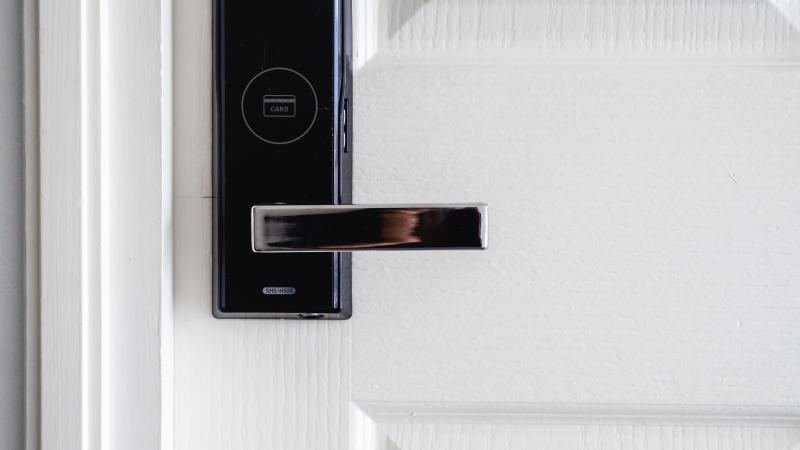When considering home automation, the advantages of wired systems can be quite compelling. One of the primary benefits is reliability. Wired connections are generally more stable than their wireless counterparts. Without the interference from walls, electronics, or other devices that can disrupt Wi-Fi signals, a wired system ensures that your smart devices remain connected and responsive at all times.
Another significant perk of wired home automation is security. With a wired system, hackers face significant challenges when attempting to gain unauthorized access. Since the data travels through physical cables, the risk of someone eavesdropping or interfering with your network is greatly reduced. This added layer of protection gives homeowners peace of mind as they utilize smart technology in their daily lives.
Wired systems also tend to offer faster data transfer speeds. When multiple smart devices are connected, a wired connection can handle the data flow more efficiently, resulting in quicker response times. This is especially important for applications requiring real-time data, such as security cameras, lighting control, and temperature regulation. In a wired setup, you can enjoy smoother performance without the lag that sometimes comes with Wi-Fi systems.
Moreover, installation of wired systems can lead to a cleaner aesthetic in your home. While Wi-Fi setups often mean unsightly routers and cables scattered throughout your living space, wired systems integrate seamlessly into your home’s design. You can hide cables in walls and ceilings, offering a tidy and visually appealing environment, while still enjoying all the automation features you desire.
Wifi Home Automation Advantages
Wifi home automation provides a seamless and flexible way to control your devices. One of the main advantages is convenience. With Wifi connectivity, you can control your home automation devices from anywhere using your smartphone or tablet. Whether you're at work, on vacation, or simply lounging on the couch, you can easily adjust your thermostat, turn on lights, or check on security cameras with just a few taps on your screen.
Another significant benefit of Wifi home automation is its easy installation and scalability. Unlike wired systems that often require extensive renovations and drilling to install, Wifi devices are usually plug-and-play. This means you can quickly set up smart devices without the hassle of complex wiring. Additionally, expanding your system is straightforward; simply add more devices as needed without worrying about the restrictions of wired connections.
Accessibility is also a key advantage of Wifi home automation. Most Wifi-enabled devices are designed to integrate with various platforms and ecosystems, allowing for a wide range of compatible products. Whether you prefer using Google Assistant, Amazon Alexa, or Apple HomeKit, you can easily find smart home devices that suit your preferences. This interoperability ensures that as technology evolves, your home automation system can adapt and grow with it.
Lastly, Wifi home automation often comes with cost savings in the long run. Many Wifi smart devices are energy-efficient, helping you lower your utility bills. For example, smart thermostats can adjust your home's temperature based on your schedule, reducing energy consumption. Moreover, with the ability to monitor your home remotely, you can identify and address issues promptly, potentially saving on expensive repairs in the future.
Comparing Reliability of Wired and Wifi
When it comes to home automation, reliability is a major factor to consider. Wired connections, like Ethernet, tend to be more stable because they provide a direct, physical link between devices. This means there's less interference from outside sources, such as other wireless networks or electronic devices. If you set up a wired system, you can expect consistent performance, making it an ideal choice for critical applications like security cameras or smart home hubs.
On the other hand, WiFi offers convenience and flexibility, but it may come with some trade-offs in reliability. Wireless signals can be affected by various factors such as distance from the router, physical obstructions, and even the number of devices connected to the network. This variability can lead to dropped connections or slower response times, especially in larger homes where devices are spread out over longer distances.
Despite these challenges, modern WiFi technology has significantly improved, with advancements like mesh networks that help extend coverage and boost reliability. However, for those who prioritize a reliable connection above all else, wired systems still hold the edge. It ultimately comes down to your specific needs—if you want a hassle-free and stable experience, wired may be the way to go, while WiFi can offer more flexibility for casual setups.
Cost Considerations for Home Automation
When it comes to home automation, cost is often a deciding factor for many homeowners. The price tag of a system can vary widely depending on whether you choose a wired or Wi-Fi solution. Wired systems usually entail higher upfront costs due to the installation of cables and possibly more complex hardware. However, they often offer greater reliability and fewer maintenance costs over time. With wiring in place, you can avoid the need for Wi-Fi signals, which can be unreliable due to interference or distance from the router.
On the other hand, Wi-Fi home automation systems tend to be more budget-friendly initially since they require less labor and hardware installation. Many smart devices can simply connect to your existing Wi-Fi network, making them easy to set up and adjust as your needs change. However, this convenience can lead to ongoing costs if your Wi-Fi requires upgrades or if you need to replace devices that have connectivity issues. Also, keep in mind that some lower-cost Wi-Fi devices may not offer the same durability and longevity as their wired counterparts.
Additionally, think about future expansion when evaluating your budget. While wired systems can be costly upfront, they may prove more cost-effective in the long run if you plan to add more devices in the future. A Wi-Fi system may need additional routers or extenders to ensure coverage throughout your home, adding to overall expenses. Ultimately, balancing the initial investment with long-term costs and maintenance is key to making an informed decision about your home automation system.


